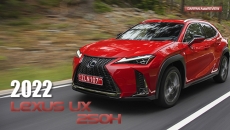The Tesla Model Y SUV is the best-selling electric vehicle in the U.S. and is quickly finding success overseas as well. But with a current starting price of $67,190, the Model Y leaves room for competitors to undercut it. Not surprisingly, that’s exactly what Genesis hopes to do with its all-new GV60.
Just like the Model Y, Genesis’ GV60 is a small SUV and boasts dual electric motors for strong performance and a tech-laden interior. Starting at $60,385, the GV60 has a solid price advantage over the Tesla. Does this upstart EV have what it takes to outperform the well-established Model Y? Edmunds car experts compared them to find out which is the better buy.
RANGE AND CHARGING
Tesla sells two versions of the 2022 Model Y. The Long Range provides an EPA-estimated 330 miles on a full charge, which is one of the longest distances for an electric SUV. The higher-horsepower Performance model gets a respectable 303-mile estimate. However, in Edmunds’ real-world standardized range testing, the Model Y came up a little short of its EPA range estimates.
Genesis has a two-version lineup for the GV60 as well: Advanced and Performance. The GV60′s EPA estimates are lower than the Model Y’s: 248 miles for the Advanced trim and 235 miles for the Performance. Although when Edmunds tested the Performance model, it outperformed its estimate and went 274 miles.
Essentially, real-world driving is closer than it looks. But Tesla’s vast Supercharger fast-charging network gives it the win because it provides more public charging stations for both out-of-town and in-town charging needs. The GV60 has the ability to charge quicker, but few charging stations can support that speed and are from various third-party companies.
Winner: Tesla Model Y
TECHNOLOGY
The Model Y’s centerpiece is its large 15-inch touchscreen that serves as the control interface for nearly everything. It looks great, but we’ve found it can be distracting to use while driving. Autopilot, a drive system consisting of several advanced driver aids, is generally helpful. However, Edmunds has found the operation of its adaptive cruise control and vehicle detection systems to be a bit hit-or-miss. Also, there’s no way to fully integrate your smartphone into the touchscreen.
The GV60 does have Apple CarPlay and Android Auto smartphone integration. Also, its two 12.3-inch displays and head-up display make it easier to use the infotainment system and see important information while driving. The GV60 also offers two features that Tesla doesn’t: a facial recognition system for unlocking the vehicle and the ability to power small appliances and electronic devices from the battery pack.
Winner: Genesis GV60
PERFORMANCE
Mash the accelerator pedal and the Model Y Performance will effortlessly accelerate from 0 to 60 mph in just 3.5 seconds. The GV60 Performance is a little slower — 3.9 seconds — but it’s a difference that won’t likely be noticed while driving around town.
Both EVs should impress If you enjoy athletic handling. The Tesla and Genesis have quick and accurate steering and stay composed around turns despite their hefty weight. They both offer solid braking performance.
One-pedal driving, which lets you use the accelerator pedal for both acceleration and braking, cannot be turned off or adjusted in the Model Y. But it’s completely adjustable in the GV60, allowing drivers to choose how they want to drive.
Winner: tie
COMFORT
Most SUVs have ample levels of comfort, but there’s a difference between these two rivals.
The GV60 provides a more comfortable ride, especially if you opt for the Performance model that comes with an adaptive suspension. Its plush seats are highly adjustable and are heated and ventilated. Overall comfort is one of the best in class. The Model Y’s ride is firmer, but its seats are well padded and supportive. On hot days, though, the enormous glass roof can heat up the cabin, making you wish that ventilated seats were offered.
Winner: Genesis GV60
UTILITY
The GV60 provides adequate cargo and passenger room. But the bigger Model Y simply offers more. There’s more available cargo space behind the rear seats, and up front is a roomy front trunk. The GV60′s tiny front trunk isn’t really usable. As for passenger room, the front seat space is pretty even, but the Model Y has more rear seat head- and legroom. You also have the option of adding a two-seat third row in the Model Y, albeit one that’s very small and reduces cargo space.
Winner: Tesla Model Y
EDMUNDS SAYS
The reasons for the Tesla Model Y’s popularity are easily understood: It offers lots of utility, provides a generous driving range and has super-easy DC fast-charging capability. But in this comparison, we give the narrow win to the GV60. Its superior comfort, technology and value make it a more compelling EV to own long term.






